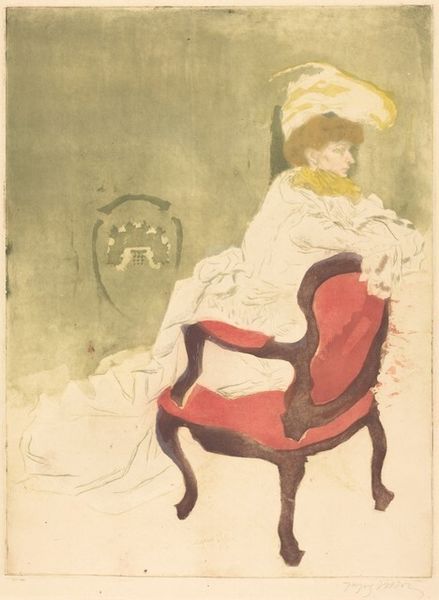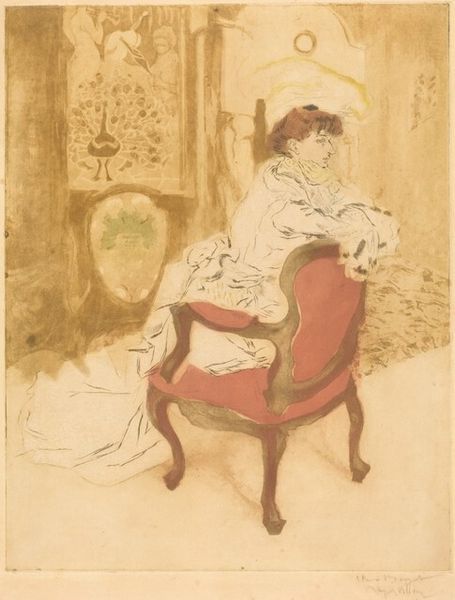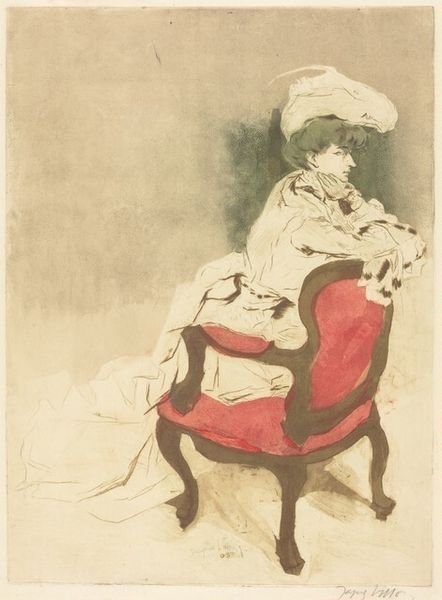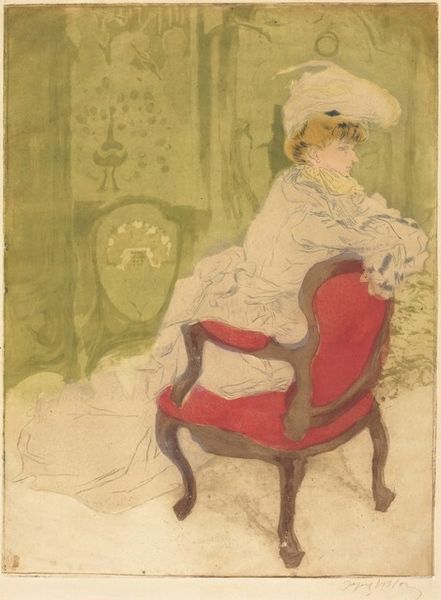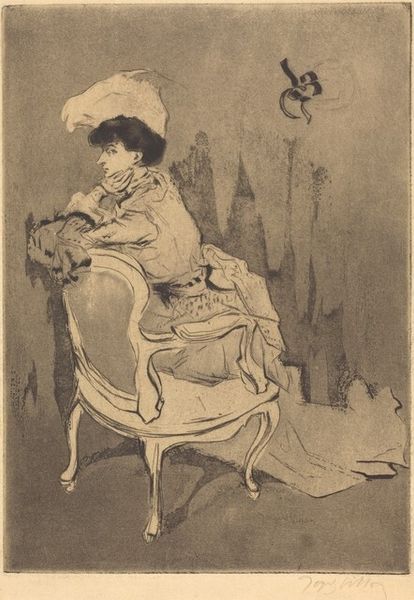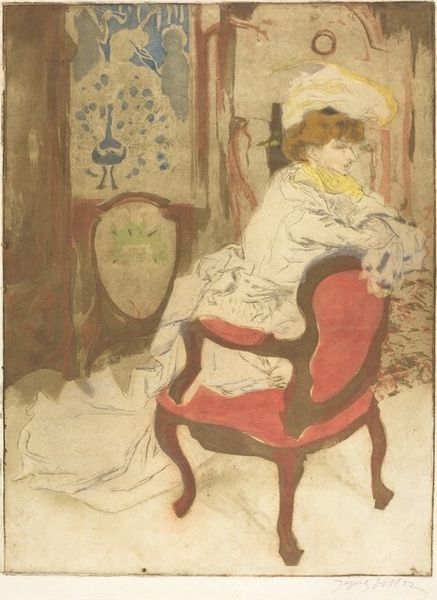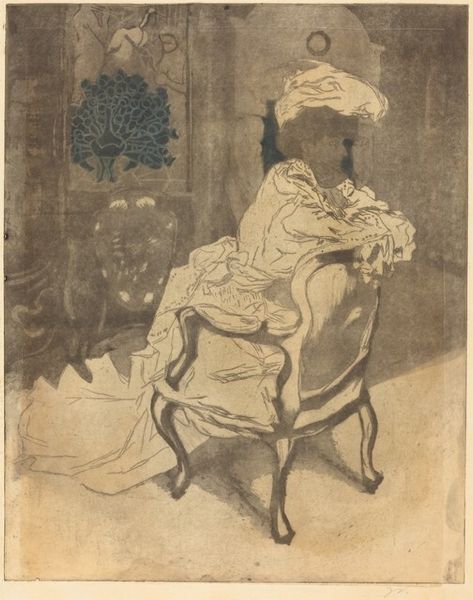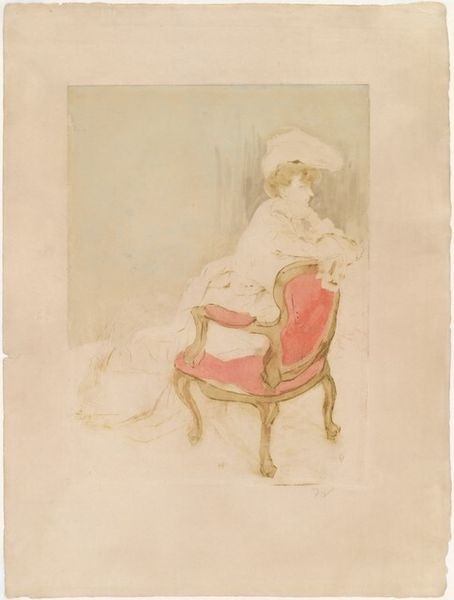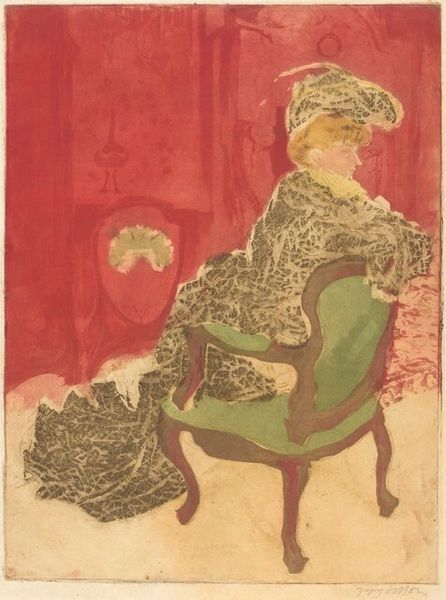
print, etching
#
portrait
#
art-nouveau
# print
#
etching
#
figuration
#
genre-painting
Dimensions: plate: 23.8 x 16.7 cm (9 3/8 x 6 9/16 in.) sheet: 39.9 x 26 cm (15 11/16 x 10 1/4 in.)
Copyright: National Gallery of Art: CC0 1.0
Curator: Here we have Jacques Villon's etching "The Parisian," also known as "La Parisienne," created in 1904. It’s a small plate, relatively speaking. What's your initial reaction to it? Editor: It has a wistful quality, don't you think? A sense of transient beauty caught in a specific moment. The formal arrangement, especially the repetition of curves in the chair, dress, and hat, is quite striking. Curator: Yes, and those curves evoke the stylistic vogue of Art Nouveau that was in its prime at this time. I am curious about the choice of etching for depicting this modern woman, and how printmaking democratized art for wider consumption. Villon's choice speaks to making art more accessible, depicting everyday subjects, but still, appealing to middle class Parisians with enough leisure for entertainment. Editor: Indeed. Let's consider the visual vocabulary itself. The stark contrast between the shaded background and the woman’s delicate attire throws her figure into sharp relief. Notice how Villon has distributed the highlights and shadows; it leads your eye gently across the scene. The woman's gaze directs your attention off to some imagined point. Curator: The way Villon deploys those shadows definitely constructs a mood, doesn’t it? Given his family background of artistic skill as well as art dealing, I am struck by how much his commercial mindset may have affected his output, as well as the social commentary present depicting an everyday woman from the Parisian bourgeois. Editor: Well, beyond those elements, one has to admire the pure composition: the way he employs line and shape to capture the figure's elegance with this kind of restraint. The material properties of the etching medium allow this crisp rendering. And it works to create this evocative and lasting image. Curator: And yet that very crispness is achieved only through the laborious process of etching, with all its associated chemical and physical demands. But these all come together to solidify this glimpse of early twentieth-century Parisian society in the art market. Editor: It’s remarkable how much can be communicated with so few lines. It really demonstrates the power of form, irrespective of its production circumstances. Thank you. Curator: Indeed. Considering both the artistic method and historical context has made the artwork far more resonant, hasn’t it?
Comments
No comments
Be the first to comment and join the conversation on the ultimate creative platform.
